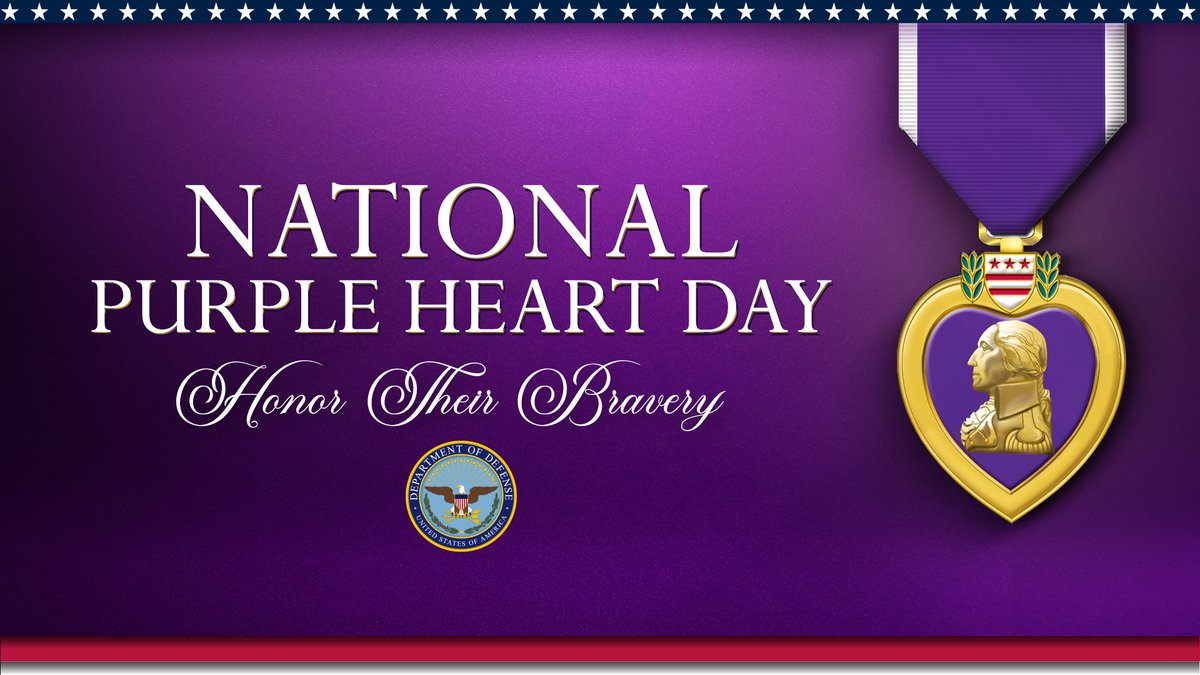Tega Cay, SC (Tega Cay Sun) – August 7 marks National Purple Heart Day, a special occasion dedicated to commemorating and paying tribute to our brave service members who were wounded in combat or made the ultimate sacrifice for the United States of America.
The Purple Heart Medal stands as a symbol of valor, courage, and sacrifice, recognizing the unwavering dedication of brave individuals who have endured wounds or paid the ultimate price while serving the United States of America. This prestigious military decoration holds a rich and storied history, dating back to the earliest days of the American Revolution.
The roots of the Purple Heart Medal can be traced back to General George Washington’s visionary leadership during the Revolutionary War. On August 7, 1782, Washington established what was then called the “Badge of Military Merit” as a way to acknowledge exceptional acts of bravery and merit on the battlefield. This unique honor was intended to recognize soldiers who displayed extraordinary courage, leadership, and dedication to their country’s cause.
Originally, the Badge of Military Merit was a simple purple cloth heart-shaped patch, worn on the uniform of distinguished soldiers. These recipients were also granted permission to pass guards and sentinels freely—a privilege that carried great significance during the war.
Despite its noble intentions, the Badge of Military Merit’s use gradually declined after the Revolutionary War, and eventually, it fell into disuse altogether. The decoration was largely forgotten for nearly 150 years, awaiting a revival that would elevate its status to greater prominence.
The Purple Heart, as we know it today, owes its revival to the efforts of General Douglas MacArthur, who, as the Army Chief of Staff, sought to reintroduce and modernize the award. On February 22, 1932, on the 200th anniversary of Washington’s birth, MacArthur announced the establishment of the Purple Heart Medal. The medal retained the purple heart-shaped design as a nod to its historical roots, but it now took the form of a medal suspended from a purple and white ribbon.
The Purple Heart’s significance soared during World War II, as countless soldiers displayed exceptional bravery and resilience on the battlefields across the globe. The medal became a poignant symbol of the sacrifices made by American service members in the face of adversity and danger.
Over the years, the criteria for awarding the Purple Heart Medal has evolved to encompass not only injuries sustained in combat but also posthumous recognition for those who made the ultimate sacrifice. Today, the Purple Heart continues to hold immense importance, serving as a testament to the enduring spirit of courage and selflessness within the United States military.
Throughout history, numerous distinguished individuals have received the Purple Heart Medal for their bravery and sacrifice. From iconic figures like General Douglas MacArthur, who played a pivotal role in reviving the award, to the countless unnamed heroes who have shown incredible valor on the battlefield, each recipient represents the very essence of American patriotism and devotion.
The Purple Heart Medal stands as an enduring tribute to the courage and sacrifice of those who have served the United States. From its humble beginnings as the Badge of Military Merit in 1782 to its current status as a prestigious military decoration, the Purple Heart’s history reflects the unwavering commitment of America’s service members to protect and defend their nation. As we commemorate National Purple Heart Day each year on August 7, we honor the resilience and bravery of those who wear the Purple Heart Medal—a symbol of true American heroism.










